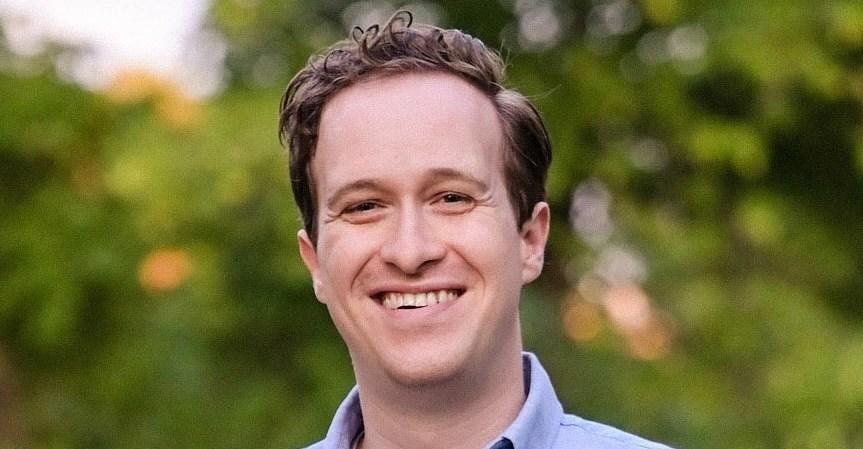Longevity research may not let us live forever — but it could still make our lives better in smaller ways.


Jonathan An tries to ignore the hype about new life-extension treatments, but it’s caught up to him anyway.
He has heard the gospel of the longevity influencers, including that one multimillionaire who has been on a media campaign for months claiming that the 111 pills he takes each day will help him live forever. An, an assistant professor of oral sciences at the University of Washington, doesn’t buy it. But he recently found himself inadvertently ensnared by the fervor around anti-aging — thanks to his mice.
An has studied mice suffering from periodontal disease, a bacterial-induced inflammatory infection of the gums that can lead to tooth loss. Mice (and more than 60 percent of human adults over 65) have to deal with this uncomfortable oral illness — and they don’t have much choice but to cope. When people’s teeth fall out, dentists like An replace them. But he would rather not have to remove so many.
While studying for his doctorate in dentistry at the University of Washington, An pursued a joint PhD to research preventive dental measures. He experimented with giving mice chow infused with the drug rapamycin each day to see if it would improve their oral health.
It worked. Mice treated for eight weeks with the drug — traditionally used to help prevent organ-transplant rejection — not only experienced delayed symptoms of periodontal disease, but saw regrowth of their tooth-supporting jaw bones.
This year, An is planning to test rapamycin in humans. If it has the same effect in adults as it did in mice, people might eventually be able to pick up a drug at the pharmacy that helps them avoid unwanted trips to the dentist’s office.
Better dental health would be a pleasant effect, but that’s not why An’s research drew an unusual amount of attention. Because the drug An chose to test was rapamycin, the longevity field took notice. In separate lab experiments over the past decade, rapamycin has been found to extend the lifespan of yeast, nematodes, fruit flies, and mice. It has helped mice delay or reverse immunity decline, muscle decline, cognitive decline, and cancer growth.
This string of successes for rapamycin, which belongs to a class of drugs that stifle one biological pathway for cell growth, has caught the eyes of renowned longevity researchers. It’s also attracted the attention of wealthy lifehackers and the clinics, supplement companies, and biotech investors who — out of true belief, opportunism, or a combination — stand to make money from people seeking an elixir for longer life.
Since An’s study was published in 2020, longevity clinics from across the country have asked him how they can incorporate rapamycin into their practices. Some scientists consider rapamycin a strong candidate for life-extension purposes both because it has helped lab species live longer and because it has already been approved as an immunosuppressant in humans. Today, doctors can and do prescribe rapamycin for off-label use — including for longevity.
An wants to believe that these clinics — part of a fledgling longevity industry that includes between 50 and 800 providers across the US, according to the Wall Street Journal — are genuinely trying to improve their clients’ health. But he suspects that may not always be the case.
He tells the longevity crowd what he does know, which is less exciting than they might hope. When it comes to human health, “I don’t know what rapamycin does,” he said. “But I always tell them to make sure to have a dentist on hand because some of the side effects are oral-related.”
Other companies want him to help with their own studies, the results of which they plan to keep private. An says no. “I’m a dentist,” An said. “Not a salesperson.”
A longer, healthier life is one of the easiest products in the world to sell. According to a Deloitte report, the 50 biggest longevity companies raised more than $1 billion in venture capital funding as of 2020 — a number that the company said would rise “due to the growing conviction that the longevity market could outstrip the existing health care market.” Altos Labs, a “rejuvenation” biotech whose investors include Jeff Bezos, announced in 2022 that it had raised $3 billion in funding.
An astronomer’s discovery of a neutron star has much less commercial potential and therefore generates much less interest than a researcher’s discovery that the micronutrient resveratrol helps yeast live longer — even if it’s likely that neither ultimately affects human lifespan. The attention paid to billionaire-funded research risks obscuring whether the longevity field is genuinely on the verge of a breakthrough or whether a clinic is just saying that to promote their experimental blood transfusion.
In reality, longevity research is advancing — but slowly. Clinical trials are moving forward on select uses for longevity drugs, younger researchers are taking the field more seriously, and private organizations are pledging significant support to research: The Saudi-based Hevolution Foundation has promised up to $1 billion in funding annually for biotech startups and academic researchers.
But while there likely remain many promising treatment candidates that have yet to be identified, they would take decades to reach clinical trials. Even academics who are bullish on the promise of longevity research fear that, for all the fanfare, the field has become too fixated on a few drugs and lifestyle adjustments that have been under investigation for years, while neglecting the basic research that could reveal novel pathways to slow down human aging.
For now, the three best ways to extend your life remain boring: eating a healthy diet, exercising regularly, and sleeping well. We aren’t going to add decades to human life any time soon; living to 150 or 200 remains in the realm of science fiction. But in decades to come, advancements in the science of aging may still lead to therapeutic breakthroughs that lengthen human healthspan — the period of life spent in good health. Perhaps a few more people will become centenarians, but the real success would be having more years when you can live well.
How longevity went mainstream in academia
Matt Kaeberlein, a longevity researcher at the University of Washington, remembers a time when few in academia took the study of aging — much less the idea of longevity — seriously.
“When I came into the field as a graduate student in 1998, there was nobody who went to graduate school to study aging,” he said. “The perception among the broader scientific community was that it was mostly snake oil and crap. There’s still a lot of snake oil and crap, but it is more accepted now than it used to be.”
The field began gaining wider recognition in 1993 when Cynthia Kenyon, a pioneer in aging research who now works at the Alphabet-owned life sciences company Calico Labs, discovered that mutating a single gene of the roundworm Caenorhabditis elegans doubled its lifespan. Other scientists soon figured out why. Gary Ruvkun, a professor of genetics at Harvard Medical School, and his colleagues found that the altered gene regulated an insulin-signaling pathway similar to one in humans that might play a role in slowing cell growth and metabolism. Researchers like Andrzej Bartke found similar mechanisms in mice, which have been the subject of much of the relevant research so far.
“One of the key things that’s happened is that the evidence that you can actually slow down and interfere with the aging process in mammals … has become so overwhelming that only the willfully blind can ignore it,” Richard A. Miller, who leads the University of Michigan’s Paul Glenn Center for Biology of Aging Research, told me.
In the last two decades, scientists have performed hundreds of lab experiments — mostly on animals — on drugs like rapamycin, canagliflozin, acarbose, empagliflozin, metformin, and on interventions like calorie restriction in diets and removal of nondividing senescent cells. Instead of testing the effects of these treatments on specific illnesses, many of these studies test whether certain interventions slow down animals’ aging processes and help them live longer.
The expansion of longevity research has unearthed some potentially useful information about which biological mechanisms control aging and how to alter them. In mice and other species, changing a single pathway has the power to extend life by significant margins, raising hopes that if humans respond similarly, certain drugs could extend human lives by years.
“We just have a better understanding of what those pathways are,” said Tom Rando, director of the UCLA Broad Stem Cell Research Center, “even if we don’t have a complete understanding of why they work and why they extend lifespan.”
Though most experiments with potential longevity drugs and other interventions like blood transfusions are still being tested on lab animals, two dozen candidate drugs have moved to clinical trials with human patients. Daniel Promislow, a University of Washington professor of medicine and pathology, told me that when he got into the field three decades ago, researchers talked hopefully about early developments someday making it to the lab. “Fast forward 25, 30 years, and many of these lab-based discoveries are now at the heart of a large number of clinical trials,” he said.
The clinical trials could allow researchers to produce evidence for interventions — besides diet, exercise, and sleep — that might help people live longer. Coleen T. Murphy, professor of molecular biology at Princeton, wrote in her 2023 book How We Age that, “What drugs can I take to live longer?” is becoming an increasingly tangible goal.
“A few years ago I might have chuckled at the naivety of this question,” she wrote, “but now it’s not so crazy to think that we will be able to take some sort of medicine to extend our healthy lifespans in the foreseeable future.”
The horizon for this future is still far off. Most researchers I spoke to didn’t believe that humans were going to experience a rapid increase in life expectancy any time soon — or maybe ever. They believed progress would instead be made in healthspan, helping people stay healthier for longer and avoiding long periods of physical and cognitive decline as they get older.
Such results probably won’t lead to someone living an extra decade. But they could make old age less burdensome. That would matter enormously for individuals, who could enjoy more years in good health, and society, by potentially reducing the high costs of late-in-life medical care.
“I can’t fathom saying, ‘Yeah, we’re going to try to extend someone’s lifespan by nine years,’” An told me. “There’s really no way to do that.”
Behind the hype, longevity research is moving — but slowly
In a way, some of the biggest improvements to human lifespans have already been made. Initiatives in public health — water sanitation, vaccination campaigns, sewage systems — have added decades to the average person’s life over the past few centuries. Since 1900, the average lifespan of a newborn has more than doubled worldwide — from 32 years old to 71 years old.
But the very fact that humans already live far longer than a lab animal is part of the reason that longevity research is so slow and difficult. For experimental purposes, laboratory mice live less than three years. Researchers have tested rapamycin in both young and old mice at a range of doses and then waited for them to die. Doing the same in humans would be far more expensive and take much longer. It’s also not strictly legal. The Food and Drug Administration doesn’t classify aging as a disease, which means that clinical trials can’t set out solely to test how much longer an intervention keeps someone alive. Instead, researchers must study age-related indicators like cardiovascular function and cognitive impairment instead of “aging” itself.
To compensate, longevity researchers are looking for other ways to measure aging that don’t require a patient’s death. They have identified several biomarkers that could serve as surrogate endpoints, but none have reached a scientific consensus. These include “aging clocks,” predictive models that purport to measure biological age or the age of specific biological organs; Bryan Johnson, the multimillionaire tech founder who calls himself a “professional rejuvenation athlete,” touts such data as proof that he has reversed his aging.
These tests are ostensibly based on the research of Steve Horvath, a former professor at UCLA who now works at Altos Labs. He has used age-related DNA methylation to determine biological age. Though most researchers I spoke to expressed cautious optimism about the potential of Horvath’s findings, they were skeptical of the extant consumer tests.
“We’re not really sure if the age we tell you is accurate and if it’s going to be the same tomorrow and whether it has any value,” said Tony Wyss-Coray, a Stanford professor of neurology who has found that elderly mice given the blood of younger mice see improvements in brain function. “And of course, no company wants to tell you that, but that’s just a fact.”
Most longevity researchers think about their research environment the same way: The flashiest stories are usually pretty removed from the actual state of the field. A drug that just helped mice live 50 percent longer is unlikely to do exactly the same for humans, no matter what a press release implies. Human bodies are much better at repairing their DNA than mice are, which makes them less susceptible to diseases like cancer. Plus, studies that would definitively prove a certain intervention would aid human life would take decades, and experts believe they could struggle to demonstrate their effectiveness to the FDA.
“You’ll rarely find a scientist funded by the [National Institutes of Health] who’s doing work in the biology of aging who would claim that their research could or will allow people to live to 140,” Rando told me. “It’s really coalesced around the idea that our main successes will be in reducing the burden of disease.”
It reflects a realism among the real experts. In longevity, there is not going to be a moment when a chrysalis bursts and a butterfly flies out, Miller said, a sudden leap forward in people’s life expectancy. “It’s more like the evolution of land plants. Gradually, they creep up over the beach, and then onto the meadow and then into the meadows. This is sort of creeping through the scientific community — too slowly.”
According to many researchers, part of the reason for the relatively slow progress in longevity treatments is lack of funding in the field. For all the flashy announcements about companies like Calico and Altos Labs, academic researchers struggle to find financial support. The National Institute on Aging, the NIH division that funds research on the aging process, projects that it will spend about 9 percent of its budget on the biology of aging in 2024 and just under 60 percent on neuroscience-specific research. (The NIA’s total projected budget in 2024 is about $4.4 billion of the NIH’s $47.1 billion.) Promislow and Kaeberlein, who co-run a long-term study on biological and environmental factors that could contribute to aging in dogs, are currently fighting to keep their project alive with their NIH funding expected to end in June.
“I think there’s an assumption by a lot of people that there’s a ton of money in aging research,” Murphy told me. “If you’re an academic trying to get funding from the NIH, it’s actually not true.”
The lack of funding also draws university researchers out of their scholarly institutions and to companies like Calico and Altos Labs. “The idea of working with very smart people with lots of resources, all that’s really attractive,” Miller told me.
But that drift to the private sector could actually slow down aging research, already a sluggish endeavor, even more in the long run. The field is trending toward investor-driven research, while the basic research studies necessary for the next generation of possible interventions languish because they depend on public or philanthropic funding.
Drugs like rapamycin have already taken decades to enter clinical trials, but it’s possible that none of the current leading longevity candidates work. Researchers don’t even agree on which of the current drugs and interventions is the most promising: Miller, for example, told me he thinks that rapamycin is “the wrong drug” and that more funding should go to canagliflozin, which has increased median survival age in male mice by 14 percent and for which human side effects are better known due to its use in treating type 2 diabetes since 2013. Still, he doesn’t think it’s easy, “from our limited amount of knowledge, to be confident as to whether rapamycin, or canagliflozin, or any other promising drug would produce major benefits in people with acceptably low side effects.” Most aging-related biotechnology companies use investor money to test aging interventions already proven in mice. Few are conducting the basic research to find new possible pathways for future therapies.
The more aging-related pathways scientists can find, the more possible targets for longevity drugs they would have. Each discovery opens the possibility for new interventions. Kaeberlein said that though the field has expanded in terms of the number of studies on certain drugs and mechanistic pathways, it’s also become in a sense more narrow.
“We think, ‘This is how the system works. So we’re going to test these parts of the model,’ instead of the more exploratory science that was being done when I was a graduate student, which was, ‘We have no frickin’ clue how the system works. Let’s go do some unbiased screens to figure out what’s happening here,’” he said.
Longevity researchers may be playing in a tiny corner of the sandbox, investigating just a few pathways while ignoring other possibilities. Scientists blame such myopia for the long gap between breakthroughs. The most consistently effective intervention for extending animal lifespan has been known for decades: restricting the number of calories they eat.
“I think that shift in mentality has led to more incremental results and fewer big, exciting, new discoveries,” said Kaeberlein, “and I think, personally, that’s why nobody has done better than rapamycin in 15 years and no one has done better than caloric restriction in 50 years.”
There’s also the possibility that drugs that have worked consistently across different species will work for some humans but not others. “The vast majority of studies in our field are done in one genetically identical strain of mouse,” Rando said. “It’s sort of like running a clinical trial in humans and only using identical twins. … Even if something could work, it’s likely to work in a subset of the population and not in everybody.”
Oddly, even the most brazen of the (non-expert) anti-aging boosters have uninspiring perceptions of the current state of longevity research. I was surprised when Bryan Johnson explained to me that, despite having a team of doctors who track the age of his organs and feed him a daily canister of pills, his choices weren’t really made based on today’s advancements in health and wellness.
He instead puts his faith in the continued evolution of artificial intelligence capabilities, which has advanced greatly over the past few years. He sees AI continuing to develop at an exponential rate — and longevity research eventually progressing at a more rapid speed than human researchers could hope to replicate.
“It’s an observation that we are baby steps away from super intelligence,” Johnson told me, “and it’s improving at a speed that we can’t imagine.”
It’s that, he hopes, that will bring about eternal life. The mice studies are less relevant.
A more realistic future for the longevity field
Immortality is enticing, but it’s not coming anytime soon. Neither is living to 150. Some people — hopefully more than now — will live to 100, but they will still be the exception. The way longevity research might push the field forward could look very similar to the treatments we already have. For people with a high risk of cardiovascular disease, statins are a sort of longevity drug. For those dealing with certain cancers, chemotherapy can be considered a longevity treatment.
The future of longevity likely looks more like the world where we discover that rapamycin — a drug that can extend the lives of mice and help humans accept a new organ — can also treat elderly patients for periodontal disease. It could mean that people take a blood sugar-regulating drug like canagliflozin and suffer from fewer heart attacks and cancers.
“I don’t really care about life extension because there’s no way to measure it,” An said. “It’s really about your health.”
Even in slow motion, the field keeps advancing. Murphy told me she was excited to see trial results from the longevity company Unity Biotechnology back in 2020. The drug UBX0101, which interacts with a tumor-suppressing pathway, cleared a phase 1 clinical trial.
When it moved to phase 2, though, it failed to achieve its aim of helping patients with osteoarthritis of the knee. A success could have been a promising sign for treatments to get rid of non-dividing senescent cells. But even a failure was valuable. It might not have been the result that anyone wanted, but it was a result, and it was public.
“That’s progress for our field,” she told me. “This is moving forward.”

How the Supreme Court is using Trump to grab more power for itself
- 4 hours ago

Traditional gender roles won’t get men what they want
- 4 hours ago

OpenAI says it’s disabled ad-like app promotions in ChatGPT
- 6 hours ago

Genki’s colorful, powerful power strip is 25 percent off
- 6 hours ago

The Verge subscription turns one
- 6 hours ago

Skateboarding is better in hell
- 6 hours ago

Betting scandals broke sports. Could prediction markets do the same to politics?
- 4 hours ago

Govt does not believe in using NAB for political vendetta: PM Shehbaz
- 13 hours ago

AI ‘creators’ might just crash the influencer economy
- 6 hours ago

President confers Nishan-e-Pakistan on Indonesian President
- 12 hours ago

Analogue is restocking its 4K N64 and making it more colorful
- 6 hours ago

Manafaingana ny famonjenan’ireo tanalahy mampalaza an’i Madagasikara ireo manam-pahaizana satria efa mitatao ny afo.
- 4 hours ago





